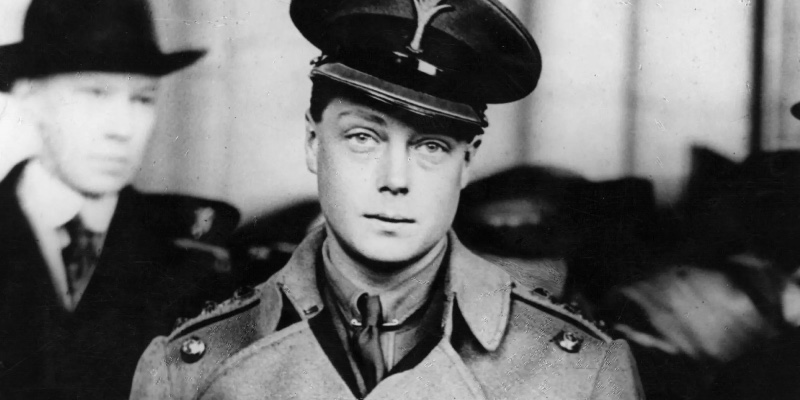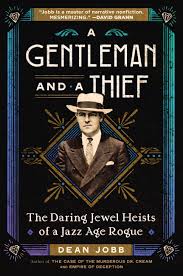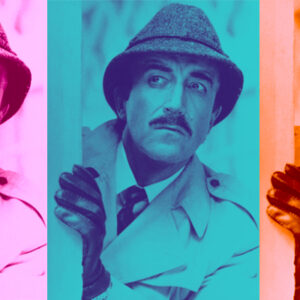Long Island and Manhattan • 1924
A man in a tuxedo and winged collar navigated a room filled with black-clad men and elegant women in Parisian gowns, sparkling with jewels. He docked alongside a group of guests who had formed a cordon around a punch bowl. Someone offered him a drink, and as names were exchanged the newcomer identified himself as Gibson. Dr. Gibson. He had thick black hair, blue eyes, and the chiseled good looks of the matinee idols seen—but not yet heard—in the movie houses. Some guests may have done a double take as he passed; he was a dead ringer for the British actor Ronald Colman, who had been catapulted to Hollywood stardom the previous year in The White Sister, starring opposite silent-era legend Lillian Gish.
One of the punch bowl’s defenders was short and slim, with sandy hair, and needed no introduction. His boyish face was tilted slightly downward, betraying his shyness, and his puppy-dog eyes had been staring out from the pages of every newspaper in the United States for days. Gibson, who scoured the society pages of New York City’s papers as meticulously as a prospector in search of gold or precious jewels, had recognized him from across the room. Edward, the Prince of Wales, was almost a week into a much-ballyhooed American holiday. Eager for a break from his royal duties, the heir to the British throne had headed for “that slender riotous island,” as F. Scott Fitzgerald would describe it in his soon-to-be-published novel, The Great Gatsby, “which extends itself due east of New York.” Long Island.
The September 1924 royal holiday coincided with a late-summer heat wave. The prince was the guest of honor at dinners, dances, and cocktail parties in the imposing mansions of the island’s elite. He went riding and played polo on their manicured grounds. He boarded their yachts to skim the waves of Long Island Sound. He golfed their private courses and plunged into their swimming pools. A fox hunt with a pack of about a hundred hounds was organized, to make him feel at home. “Never before in the history of metropolitan society,” claimed a columnist for the New York American, “has any visitor to these shores been so persistently and so extravagantly feted.”
Standard Oil executive Harold Irving Pratt and his wife, Harriet, threw a garden party for the prince and two hundred guests at Welwyn, their country estate at Glen Cove, which overlooked the sound and was considered “one of the show places of Long Island.” But they were soon upstaged by Clarence H. Mackay, a financier and heir to a mining fortune, who hosted a dinner and dance for the distinguished visitor and almost one thousand worthies at Harbor Hill, a replica French château with six hundred acres of grounds. A platoon of workmen spent days trucking in potted orange trees and installing strands of yellow electric lights, transforming the outdoor dining area into “a fairyland” fit for a prince. “A royal fete for a royal guest,” gushed Washington, DC’s Evening Star.
Not to be outdone, iron and steel magnate James Abercrombie Burden handed the prince the keys to Woodside, a Georgian mansion near Syosset that could have been transported intact from the English countryside. One New York newspaper gave it a new name: Burden Palace. The prince and his entourage were also free to drive the automobiles Burden kept on-site, a fleet that included five chrome-grilled, bug-eyed Rolls-Royce limousines.
The Cedars, the estate of Oklahoma oilman Joshua S. Cosden and his wife, Nellie, in Sands Point, however, turned out to be the biggest draw for the prince. The mansion, overlooking a wide white-sand beach, was a rambling, colonial-style confection of porches and columned verandas, with two tiers of dormers and eyebrow windows peeking out from its barnlike gambrel roof. Its owners offered the prince something the Burdens, Pratts, and other Long Island hosts could not: familiar faces. His cousin Lord Louis Mountbatten and his wife, Lady Edwina, along with his close friend Jean Norton, wife of the future Lord Grantley, were staying at The Cedars.
When the Cosdens hosted a late-night party in early September, the prince and his aides commandeered one of the Burden cars and drove over. It was there, in the midst of what one press report termed a “small but jolly” gathering, that Gibson met the prince. Gibson also caught a glimpse of the Mountbattens—the “dark, handsome naval officer,” he recalled, and the “lovely Lady Mountbatten, a pearl of international society”—as they chatted with other guests.
The party was the kind of modest, laid-back gathering the prince had been craving since his arrival. This was a holiday, not an official visit; his only commitment was to attend an international polo championship being staged on Long Island, to cheer on the British team. Edward had been traveling the world as Britain’s goodwill ambassador—cutting ribbons, making speeches, and shaking hands to shore up wartime alliances and drum up trade deals. He wanted a break. “He is here to play,” one of his aides, Tommy Lascelles, reminded the reporters and photographers documenting his every move. “His royal highness is entitled to some time to enjoy himself.”
The prince was the first of what would become a twentieth-century phenomenon: the royal celebrity. And he was furious to discover that American journalists were more aggressive and relentless than their British counterparts. “These Yank pressmen are b––s,” he griped to his private secretary in unroyal language. “One does resent their d––d spying.” The most eligible bachelor on the planet had turned thirty in June, and the American papers were obsessed with the notion that “Prince Charming” had come to their shores in search of a bride. “Would you marry an American girl if you fell in love with one?” was one of the first questions a reporter fired at him when he reached New York on board the liner SS Berengaria. And there were plenty of candidates eager to meet him or to catch his eye. ARMY OF LOVELY WOMEN SEEK HIS PRINCELY SMILE, shouted a headline in the New York Daily News. Hundreds of women “forgot decorum,” as one journalist put it, and stood on their seats at Belmont Park to catch a glimpse of him as he watched the thoroughbred races from the judges’ box.
When Gibson first spotted the prince at the Cosdens’ party, an older woman was monopolizing the guest of honor’s time, no doubt extolling the beauty and virtues of a daughter or niece. The prince had been listening politely, a cocktail in his right hand and his left arm gracefully folded against the small of his back. But it was not the woman vying for the prince’s attention that caught Gibson’s eye; it was the expensive jewelry adorning the necks and wrists and fingers of so many others. “I’m a judge of that sort of thing,” he admitted, “and I couldn’t help but admire what they wore.” Years later, he still remembered an antique Chinese piece he spotted that night, fashioned from hand-hammered gold and set with a single diamond.
Someone in the prince’s group suggested they “get away from the women” for a while. Gibson piped up and suggested “a sortie to gayer places,” that they drive into Manhattan and “see the town.” Gibson offered to be their guide.
A couple of the men surrounding the prince objected, and the idea was dropped. But Edward was not willing to pass up the opportunity to sample New York’s nightlife. “Wales does things spontaneously and when he chooses,” noted one of the American journalists covering his visit. “That is part of his charm.” The prince took his new acquaintance aside. For once, he was free of the reporters who relentlessly shadowed him. This was his chance to see New York as a tourist, not as a future king.
“Dr. Gibson,” he asked, “is that little lark still on?”
***
“Hello, suckers!”
Those were the first words most patrons heard after they climbed a flight of stairs and slipped inside one of New York’s most famous speakeasies, a greeting shouted over the din of the crowd by a brash blue-eyed blond woman who was clearly in charge. The awning over the entrance door below, on West Forty-Fifth Street, identified it as the El Fey Club, but everyone in New York called it Texas Guinan’s place. Mary Louise Cecilia Guinan was a former vaudeville and movie star who had reinvented herself as a nightclub manager. Texas-born, which explained her nickname, she had appeared in The Gun Woman, Code of the West, The Wildcat, and dozens of other westerns.
When bootlegger Larry Fay opened the El Fey earlier that year, he hired Guinan to recruit musicians and dancers, emcee the floor shows, and welcome customers with her cheeky trademark greeting. A “formidable woman,” was the verdict of critic and journalist Edmund Wilson, “with her pearls, her prodigious glittering bosom, her abundant and beautifully bleached yellow coiffure, her bear-trap of shining white teeth.” A saucy Mae West prototype, she presided over her domain, mused one journalist who dropped by, “like a gorgeous tamer who had just let herself into a large cage of pet tigers.”
As many as two hundred could be packed into the club’s narrow, smokefilled room, but no more than a half dozen couples could sardine onto the tiny patch of dance floor. A jazz band and Guinan’s outsized personality attracted the likes of actor Al Jolson, boxer Jack Dempsey and, on this night, a future king of England. Guinan, ever the cheeky self-promoter, would later boast to audiences that she had once hosted the world’s most famous prince, “a little fellow who never had a backyard or a dirty face.”
The prince had convinced a few of his companions to join Gibson on the lark. Their destination was Broadway. The White Light Belt, New Yorkers called it, or simply the Big Street. The grid of avenues and cross streets of the theater district—an area known as the Roaring Forties, with the El Fey at its epicenter—was jammed with restaurants, nightclubs, and cabarets. This was where “society, the stage, the movies and the wealth and the fashion of the town go,” noted the Daily News, “in the hours when the gay set is at its best.” Alcohol flowed as if Prohibition had never become the law of the land. To stymie the federal agents who conducted periodic raids, the El Fey stashed its liquor in the building next door, passing bottles into the club as needed through a hole in the wall that could be concealed with a loose brick.
The El Fey was known for the young, scantily clad dancers who performed and, between numbers, mingled with the men in the audience. “It was a bacchanalian feast, a Roman orgy, a politician’s clambake, all rolled into one,” recalled one of Guinan’s friends, the theater producer and publicist Nils T. Granlund. A newspaper illustrator would later imagine the prince and Gibson seated at a table and offering toasts to a lineup of bob-haired showgirls in low-cut outfits, one of them wearing a top hat presumably plucked from the royal head. The caption: “Princely Fun.”
At the El Fey and other stops, Dr. Gibson would recall, the prince’s companions referred to him as Mr. Windsor, “a high-ranking member of the British diplomatic corps.” The subterfuge suited the prince’s guide. He wasn’t a doctor, and his name wasn’t Gibson.
They hopped from the El Fey to what Gibson billed as “a swell spot” on East Fifty-Ninth Street. The Club Deauville’s “atmosphere of mystery,” press reports noted, attracted “many socially prominent New Yorkers.” Members of the house orchestra, Clark’s Hawaiians, navigated between tables as they took requests and played music from the islands. It was a slow night, with only a few tables occupied and the occasional couple fox-trotting around the dance floor. Someone offered the prince a lei, which he draped around his neck. He praised the fine tenor voice of one of the singers, then asked the band to play his favorite Hawaiian song, a chart-topping hit that year called “Aloha ‘Oe” (“Farewell to Thee”). Gibson grabbed a seat beside the prince, and they chatted, about nothing in particular—Broadway shows, popular tunes of the day, how Prohibition made it so hard to find decent liquor, even in fun-loving, booze-soaked New York. Gibson helped himself to champagne but noticed that the prince drank little. A third stop was the Florida Club, on West Fifty-Fifth Street, where a piano was set up in the middle of the room and the group took in a musical review.
The two men hit it off. The prince struck Gibson as “a real fellow. A real sport.” They were almost the same age. Both were unmarried, and both had served in the war—Gibson as a medic in the US Army, the prince as an officer in the Grenadier Guards, who toured front-line trenches to boost morale. Gibson’s posh accent masked his working-class roots in Worcester, Massachusetts. He seemed to know everyone who mattered, dropping names of the rich and famous with ease. His wit, charm, and flawless manners were those of a well-educated, well-bred member of a family that was wealthy and important. And in a tux—the work clothes of his trade—he looked the part, too. For a nighttime foray like the one to the Cosden estate, Gibson “dressed faultlessly in evening clothes,” his future wife, Anna Blake, would note. “He always looked handsome in them.”
Gibson said his goodbyes around half past five, barely an hour before sunrise, hailed a taxi, and returned to his Manhattan apartment. The prince and his companions piled into their car for the thirty-five-mile trek back to the Burden estate.
The royal tour of Manhattan’s nightlife was soon the talk of the city. The borrowed car was spotted near Texas Guinan’s, on a street off Broadway. A suspicious journalist traced the plates and discovered it belonged to the prince’s host. “He went in disguise to one of the white light jazz palaces on Broadway,” noted one account. “Nothing could prevent his instinct for fun bringing him into close view of the twinkling lights and engaging characters of New York’s night life.”
***
A king-in-waiting had managed to enjoy a few fleeting hours of freedom by pretending to be Mr. Windsor. He never suspected that his guide had been playing a part as well.
Gibson had not been on the guest list for the Cosdens’ party. Before meeting the prince that night, he had parked his red Cadillac coupe on a secluded lane at the edge of the estate, bypassing the fieldstone gatehouse at the entrance to The Cedars. He crouched in the shrubbery in his tux until he saw an opening, then emerged—“as spick and span in my dress clothes as any guest,” he later boasted—to mingle with people chatting and drinking nearby on a brick terrace. As a waiter passed, he scooped up a cocktail and joined the conversation.
He soon slipped into the darkness and wandered alongside the mansion until he found a secluded spot. He climbed a rose trellis to the roof of a porch. Above him was a second-floor window, left open on the warm summer night. Grasping the ledge, he hoisted himself inside.
He pulled on a pair of white silk gloves, ensuring that he left no fingerprints, and crept from bedroom to bedroom. He checked the tops of dressing tables and quietly slid open bureau drawers. He could hear muffled voices and music from the party below. If anyone came upstairs and spotted him in the hallway, he knew what to do—he would pretend to be lost or drunk, or claim he was looking for the bathroom.
He could find no jewelry worth taking. The fortune in gems he had come for was either locked away or on display downstairs. He returned to the open window and was about to climb out when he realized a few guests had gathered under the porch while he was inside. A waiter was refreshing their glasses, and they appeared to be in no hurry to move along. There was only one other way out. He followed the hallway to the main staircase and descended into the heart of the party. When a young woman coming up the stairs smiled at him as they passed, he was certain he looked like any other guest.
Gibson’s real name was Arthur Barry, and he was one of the most brazen and successful jewel thieves in history. He was a bold impostor, a charming con artist, and a master cat burglar rolled into one. During the Roaring Twenties, with the posh estates of Long Island and New York’s Westchester County as his hunting grounds, he swiped diamonds, pearls, rubies, emeralds, and other glittering gems worth almost $60 million today. His victims included a Rockefeller, bankers and industrialists, Wall Street bigwigs, and an heiress to the Woolworth five-and-dime store fortune. A skilled “second-story man,” Barry could slip in and out of bedrooms undetected, sometimes as the occupants were sleeping inches away, oblivious to his presence. He hobnobbed with celebrities and millionaires as he cased their mansions and planned some of the most audacious and lucrative jewel heists of the Jazz Age. He outfoxed investigators, eluded the posse of police and private detectives trying to hunt him down, and staged a spectacular prison break to reunite with the woman he loved. He was touted in the press as a “Prince of Thieves” and an “Aristocrat of Crime.” Life magazine would proclaim him “the greatest jewel thief who ever lived.”
Barry smoothed his hair into place, straightened his bow tie, and headed for the punch bowl to launch his night on the town with the prince. He now knew the upstairs layout of the Cosden mansion. He would be back.
___________________________________
From A Gentleman and a Thief © 2024 by Dean Jobb. Reprinted with permission of Algonquin Books.


















